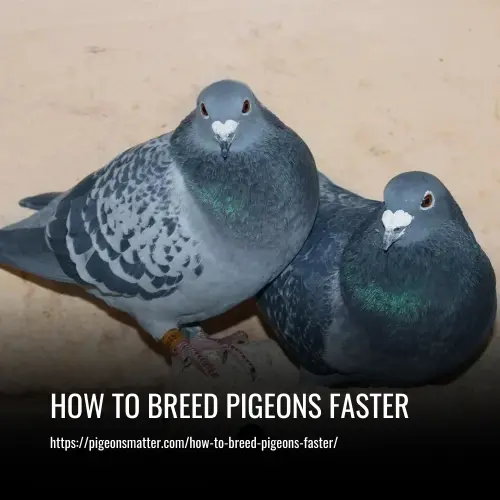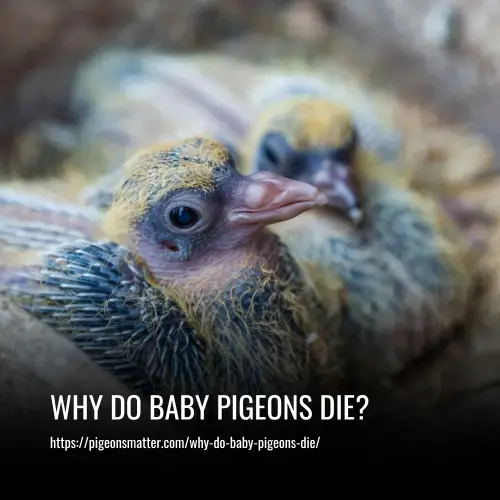Pigeon pairing mistakes are common errors made by pigeon fanciers when selecting and breeding pairs of pigeons. These mistakes can lead to poor genetic diversity, health issues, and reduced breeding success. Understanding the common pigeon pairing mistakes is essential for anyone involved in pigeon breeding or keeping.
Some Common Pigeon Pairing Mistakes:
- 1. Expecting them to Pair Up Themselves
- 2. Locking them Up in a Large Cage
- 3. Frequently Pairing Up with Different Pigeons

What are The Pigeon Pairing Mistakes
Here are some common pigeon pairing mistakes that new pigeon owners make:
1. Expecting them to Pair Up Themselves
One mistake new pigeon owners make is expecting the pigeons to naturally pair up on their own. This can be problematic because there may be multiple pigeons in the cage, making it difficult to determine which pigeons are actually forming a pair.
To increase the chances of successful pairing, it is recommended to use methods commonly used by experienced pigeon breeders. Allowing pigeons to pair up on their own can lead to ambiguity in the breed of the baby pigeons, as multiple pigeons may mate with a female pigeon.
2. Locking them Up in a Large Cage
Locking up pigeons is not a form of punishment, but rather a technique used to provide privacy for the male and female pigeons. However, some new pigeon owners make the mistake of locking their pigeons up in a large cage. This can give the pigeons enough space to stay away from each other, making it difficult for them to pair up.
It is recommended to put the pigeons in a slightly smaller cage or close them in their box/compartment within the cage. This not only helps them pair up but also allows them to take over the box as their own space.
3. Frequently Pairing Up with Different Pigeons
Another common mistake is frequently pairing up a pigeon with different pigeons. This can make the pigeons uncomfortable and disrupt the pairing and mating process. For example, if a pigeon is sold to someone who pairs it with one of their pigeons and then decides to pair it with another pigeon or sells it to another person who pairs it with their pigeon, the pigeon may be forced to pair up with multiple pigeons within a short period of time.
This is not ideal for successful pigeon breeding. It is recommended to pair up pigeons for the long term and avoid frequent changes in partners.
By avoiding these common pigeon pairing mistakes, pigeon owners can increase the chances of successful pairing and breeding.
How To Pair A Pigeon
Pairing pigeons is an important part of pigeon breeding. There are several ways to pair up pigeons, but the basic concept is to provide them with a space to mingle. This can be done in one of the enclosed boxes or compartments within the pigeon cage, or in a separate pigeon cage.
1. Enclosed Boxes/Compartments
One way to pair up pigeons is by providing them with enclosed boxes or compartments within the pigeon cage. This allows them to interact and get to know each other while still being in a controlled environment.
2. Separate Pigeon Cage
Another option is to use a separate pigeon cage for the pair to get acquainted. This provides a fresh start for the pigeons and allows them to bond in a new space.
Providing pigeons with a space to pair up is essential for successful pigeon breeding. Whether it’s through enclosed boxes or a separate pigeon cage, giving them the opportunity to mingle is key.
How Long Does It Take For Pigeons To Pair Up
Typically, it takes one night for pigeons to pair up. However, in some cases, it may take up to three nights before they form a pair. The time it takes for them to pair up depends on their mood, behavior, and environment.
The key is to provide them with the right space and conditions for pairing up. Understanding how to create the right environment for pigeons to pair up is crucial in facilitating the process.
FAQs
Pigeon pairing mistakes refer to the incorrect matching of pigeons for breeding purposes, which can result in undesirable traits or health issues in the offspring.
If your pigeon is not pairing, it could be because the male is being territorial and fighting with the female. To address this issue, you can try separating them into different cages and keeping them away from other pigeons for a week. After the week is up, you can reintroduce them to each other while they are still in their separate cages.
Pairing mistakes can result in offspring with weakened immune systems, genetic abnormalities, and reduced fertility. In some cases, it can lead to the loss of valuable breeding stock.
Pigeons put their beaks together as a part of their mating behavior. This is a common behavior seen in many birds, including sparrows and parrots. It is a way for pigeons to interact and communicate with each other before mating.
Pigeons have different colors due to genetics and their breed. They inherit their feather colors, size, and body shapes from their parents. Additionally, there are over 800 different pigeon breeds worldwide, which contributes to the variation in colors, sizes, and body shapes among pigeons.
Pigeon breeders should carefully research the lineage and genetic history of their pigeons before pairing them. It’s important to avoid inbreeding and to select pigeons with strong, desirable traits for breeding.
Breeders should consider the genetic diversity, health, and potential offspring traits when pairing pigeons. They should also seek advice from experienced breeders or avian veterinarians.
While the consequences of pairing mistakes can’t be reversed in the affected offspring, breeders can prevent future mistakes by making more informed pairing decisions and learning from past errors.
Conclusion
In conclusion, it is crucial to be aware of the common pigeon pairing mistakes in order to ensure the health and well-being of these birds. By understanding the importance of genetic diversity and choosing suitable mates, pigeon breeders can avoid detrimental issues such as inbreeding and genetic disorders.
Additionally, providing a proper environment and management for the pairs will contribute to successful breeding and the production of healthy offspring. By being mindful of these mistakes and taking the necessary steps to avoid them, pigeon breeders can promote the overall welfare and sustainability of their flocks.


